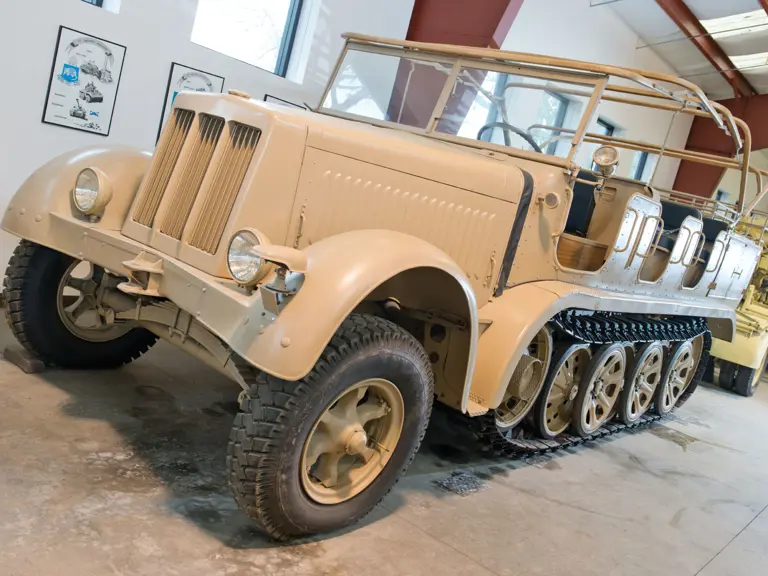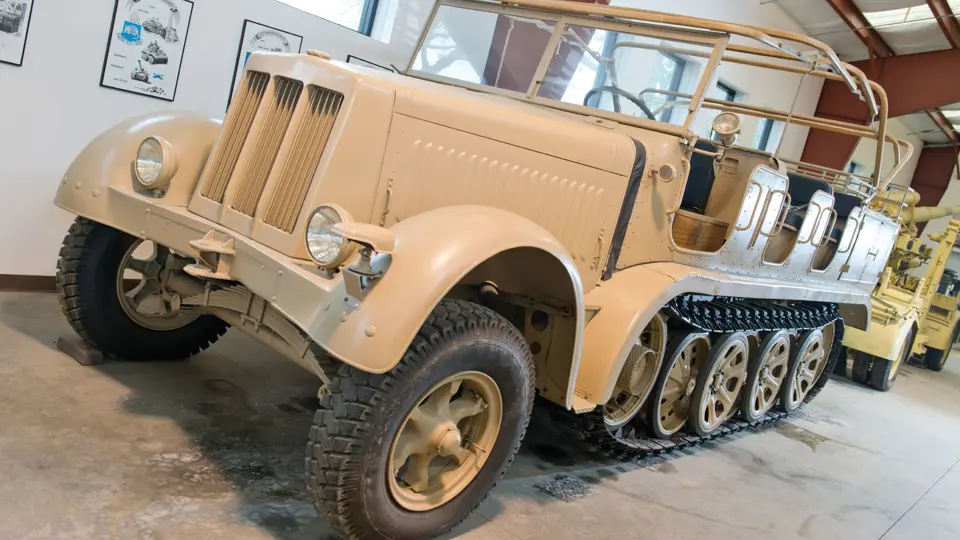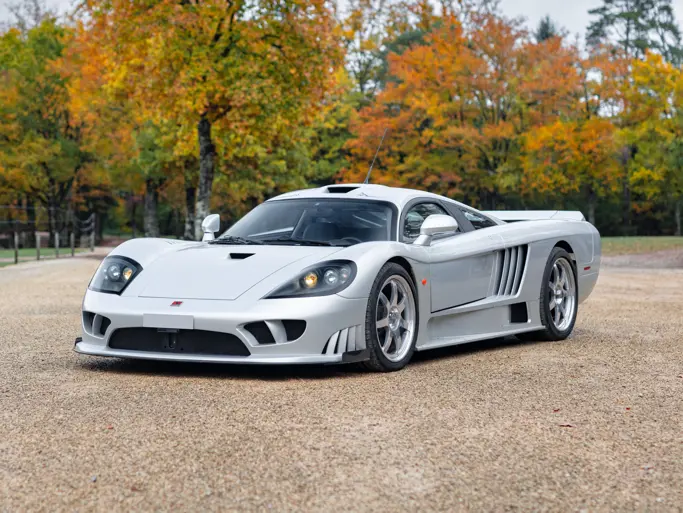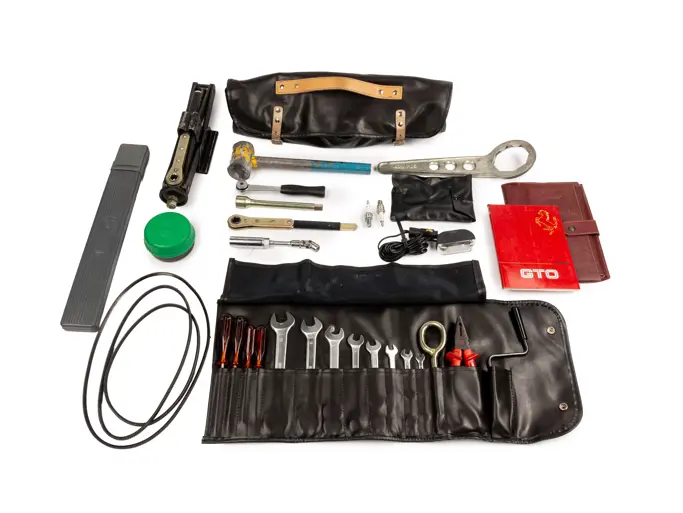 | Portola Valley, California
| Portola Valley, California
Weight: 12.7-tons (11,550-kg)
Length: 22' 5” (6.85-m)
Width: 7' 7” (2.40-m)
Height: 8' 6” (2.62-m)
Crew: 1 + 11 passengers
Armor:
None
Weapons:
None
Engine: 6-cylinder Maybach HL62 TUK, 140-hp
Power/weight: 11-hp/ton
Fuel Capacity: 56-USG (213-l)
Range: 155-miles (250-km)
Speed: 31-mph (50-km/h)
The vehicle being offered, 8-ton Half-track Sd.Kfz. 7, is a quite rare vehicle. It was thoroughly restored in the late 1990s or early 2000s and arrived at the MVTF sometime between 2004 and 2006. It is in immaculate shape. It appeared on the cover of the December 2003 issue of Military Machines International magazine and was shown in two other photos in the same issue as it was being put through its paces at the 2003 Duxford show. Based on the stamping on the front towing pintle, this vehicle was built in 1942. The paint is in excellent condition. The tires, roadwheels and tracks are in like new condition. All exterior lights are present. The rear winch is provided with a cable. The engine compartment is clean and appears to be complete. All driver’s instruments appear to be complete. The actuator lever for the radiator louvers functions normally. The troop seats are in excellent condition. Troop straps are provided for each row of seats. Wooden tilts for the foul weather cover are mounted are appear to work normally. The windscreen glass is in excellent condition. Rifle racks are mounted with each row of seats.
Design work on the Sd.Kfz. 7 half-track, or more formally, Sd.Kfz. 7 mittlerer Zugkraftwagen 8t, began in 1934. It was built to fulfill a Wehrmacht requirement for an 8-ton half-track prime mover. Trials vehicles were produced between 1934 and 1938. The type was officially accepted into service in 1938 with production starting at that time. By the time production ended in 1944, 12,187 had been built by three manufacturers: Krauss-Maffei, Borgward and Sauserwerke. A further 250 were built under license in Italy by Breda.
The Sd.Kfz. 7 was used to tow medium artillery such as the 15-cm sFH 18, 10-cm schwere Kanone 18 and the 8.8-cm Flak gun series. Bench seating was provided for up to 11 gun-crew members while compartments in the rear of the vehicle could be used to carry ammunition. The Sd.Kfz. 7 had a towing capacity of 17,600-lbs (8,000-kg) so it could handle most medium artillery in the Wehrmacht inventory. The suspension consisted of two undriven front wheels and a tracked rear with seven sets of roadwheels per side. The drive-sprocket was located at the front of the track system. A powered winch was located at the rear of the vehicle near the towing pintle.
Several variants of the Sd.Kfz. 7 were produced during the war, including the late war variant with a wooden truck-type cab and load-bed and a few anti-aircraft versions. The Sd.Kfz. 7/1 carried a 2-cm Flakvierling 38 while the Sd.Kfz. 7/2 mounted a 3.7-cm Flak 36. Both versions were built in armored and unarmored variants.
The Sd.Kfz. 7 saw service with the Wehrmacht throughout World War II. There were never enough to go around, so most of them ended up with German mechanized units, thus forcing most of the German Army to rely on horses for the duration of the war. Post-war, they were used by the Czechoslovakian Army for several years until replaced by Soviet or domestically produced equipment.
Transport Cost to Storage: $1,452





